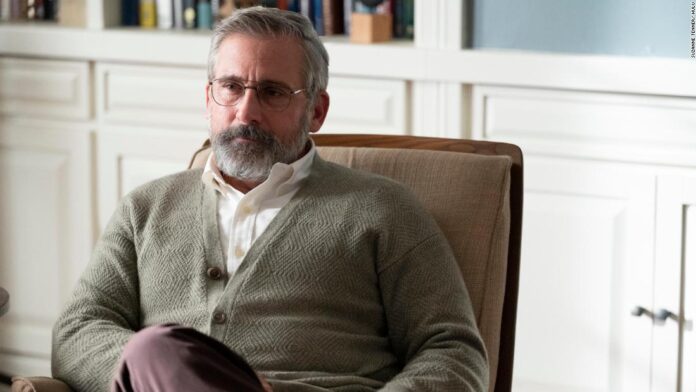“The Patient,” which is mostly a two-hander and is at its best in those sequences, starts out well before lagging in the middle then picking up pace amid twists and turns that continue all the way to the finale. Despite not quite having the weight to support even its relatively short episodes, the 10-part limited series ultimately succeeds as a true showcase for Steve Carell and an appropriately spooky Domhnall Gleeson.

The storyline appears to be simple enough: Sam (Gleeson), a serial killer, kidnaps Dr. Alan Strauss (Carell) so that he may focus intently on a project that he hopes would “cure” him of his compulsions or at the very least help restrict them.
Alan is confined to a bed in a far-off guest room, and he is constantly imagining angles that he believes will prevent him from being involved in Sam’s hobby or a victim himself. He is also looking for any flaw or vulnerability that would allow him to escape or persuade Sam to let him go.
Alan’s situation is reminiscent of Hitchcock in several ways, and Sam is involved in more than first appears to be. To begin with, there is the issue of whether he is single and how that may affect the psychological chess game that the therapist is reluctantly obliged to play.
Joel Fields and Joe Weisberg, the writers of “The Americans,” gave Carell another strong straight dramatic role in “The Patient” (following the misguided “Space Force) and made use of Gleeson’s talent for capturing halting awkwardness by putting him on the other side of the dangerous dynamic he played in the science fiction film “Ex Machina.”
The storey diverts into a series of flashbacks about Strauss’ late wife (Laura Niemi) and how he became estranged from his grown son (Andrew Leeds), whose turn to a stricter adherence to Judaism caused a rift with his parents. However, the cat-and-mouse interaction is clearly deemed insufficient to sustain the narrative even with the wrinkles added into it.
Although it seems reasonable that Strauss would use this time to reflect on his own life, there is a manipulative quality to the way the plot is presented and other techniques employed to get into the character’s brain. On the other side, Carell’s performance challenges the custom of turning a regular person into a superhero in dangerous situations by being surprisingly authentic in terms of the character’s anxieties in this absurd situation.
“The Patient,” which is strongest in the first half-hour of chapters, falls short of its potential and would have benefited from trimming the backstory; however, the execution ultimately proves unpredictable enough to justify the journey and largely avoid the serial killer clichés that too frequently rear their ugly heads.
Although “The Patient’s” conclusion is unlikely to satisfy everyone, it does keep the audience on their toes and causes them to consider the issue for a little while after the film has ended. At least the creators can’t be accused of squandering your time if that isn’t the prescription for a completely satisfying result, unlike some therapy sessions.
Aug. 30 marks Hulu’s “The Patient” debut.


